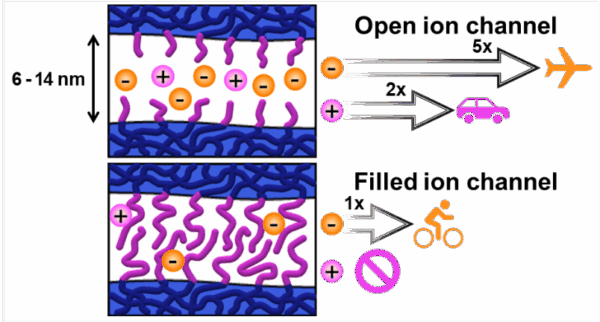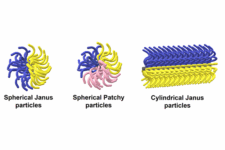“Morphological transition from porous to nonporous ion-conducting nanochannels in triblock polymer-based anion exchange membranes via polymerization-induced microphase separation” by Jinyeong Oh, Taeseok Oh, Chang Jin Lee, Soonyong So, Myungeun Seo was published in Journal of Membrane Science. This work was done in collaboration with Soonyong So, a principal researcher at the Hydrogen Energy Research Center of the Korea Research Institute of Chemical Technology (KRICT), for the performance analysis of anion exchange membranes (AEMs). Check out the full story at the following link: https://doi.org/10.1016/j.memsci.2025.124384.

AEMs are key components in various advanced electrochemical systems, such as alkaline fuel cells, water electrolyzers, and redox flow batteries. By selectively conducting anions while blocking undesired species (a property known as permselectivity), AEMs enable efficient ion transport and improve the performance and stability of these devices. However, investigating the effects of nano-structuring of active channels to achieve high permselectivity remains an unexplored area.
Conventional porous AEMs often suffer from uncontrolled pore sizes and limited charge control. Nonporous AEMs synthesized by post-polymerization modification of block copolymers have been widely studied, but there are only a few examples that provide both cross-linking (for structural integrity and reduced swelling) and 3D continuous ion channels (for facilitated ion transport). As the demands for next-generation clean energy and energy storage systems grow, developing AEMs that combine tunable nanostructures with robust ion selectivity has become increasingly important.
In this work, we present a new design strategy for AEMs that combines polymerization-induced microphase separation (PIMS) with a triblock copolymer approach to precisely engineer the morphology of ion-conducting channels. By incorporating a sacrificial polylactide (PLA) block and a pre-functional poly(vinylbenzyl chloride) (PVBzCl) block into the polymer backbone, we created well-defined, 3D continuous nanochannels embedded within a highly cross-linked framework. Selective removal of the sacrificial block produces tunable nanopores, while post-modification transforms the PVBzCl block into positively charged poly(vinylbenzyl trimethylammonium) (PVBzTMA) chains. This method enables independent control over channel size (6–14 nm) and charge density (0.14–1.32 mmol g-1).
One of the key advantages of our system is the ability to induce a morphological transition from open porous channels to nonporous, filled ion-conducting domains by tuning the ratio of the molar mass of the sacrificial and pre-functional blocks. This tunability directly influences permselectivity. AEMs with open channels showed high permeability for both anionic and cationic dyes, while the nonporous channels with densely packed ammonium groups selectively blocked cationic species by electrostatic repulsion, demonstrating strong Donnan exclusion effects. Moreover, the resulting AEMs exhibit efficient ion conductivity thanks to 3D continuous channel morphology and remain stable under alkaline conditions and organic solvents due to the dense cross-linking within the framework. This work provides a versatile platform for designing next-generation membranes with precisely tailored nanostructures, offering new pathways for energy conversion and storage technologies.

